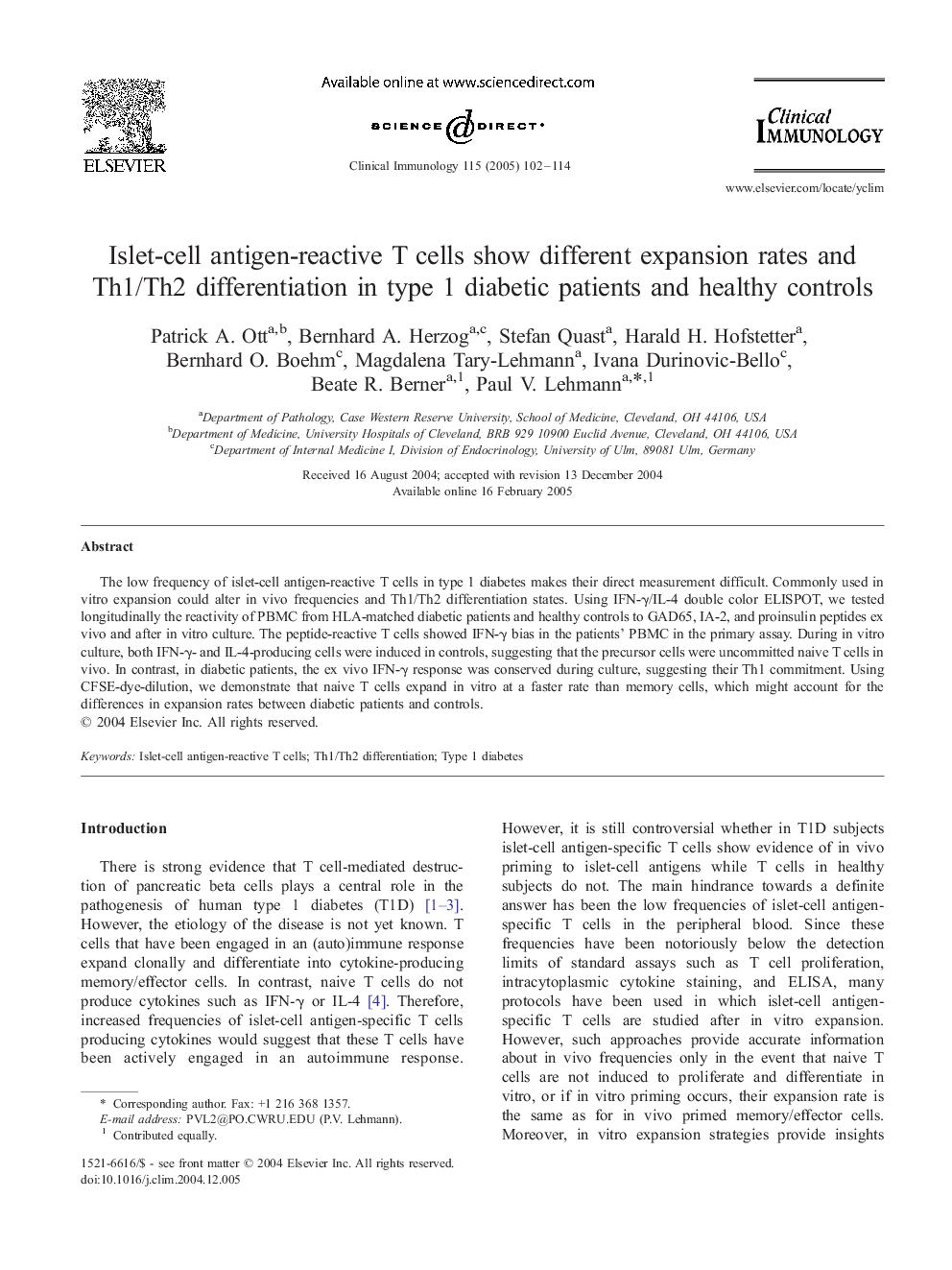| Article ID | Journal | Published Year | Pages | File Type |
|---|---|---|---|---|
| 9236593 | Clinical Immunology | 2005 | 13 Pages |
Abstract
The low frequency of islet-cell antigen-reactive T cells in type 1 diabetes makes their direct measurement difficult. Commonly used in vitro expansion could alter in vivo frequencies and Th1/Th2 differentiation states. Using IFN-γ/IL-4 double color ELISPOT, we tested longitudinally the reactivity of PBMC from HLA-matched diabetic patients and healthy controls to GAD65, IA-2, and proinsulin peptides ex vivo and after in vitro culture. The peptide-reactive T cells showed IFN-γ bias in the patients' PBMC in the primary assay. During in vitro culture, both IFN-γ- and IL-4-producing cells were induced in controls, suggesting that the precursor cells were uncommitted naive T cells in vivo. In contrast, in diabetic patients, the ex vivo IFN-γ response was conserved during culture, suggesting their Th1 commitment. Using CFSE-dye-dilution, we demonstrate that naive T cells expand in vitro at a faster rate than memory cells, which might account for the differences in expansion rates between diabetic patients and controls.
Related Topics
Life Sciences
Immunology and Microbiology
Immunology
Authors
Patrick A. Ott, Bernhard A. Herzog, Stefan Quast, Harald H. Hofstetter, Bernhard O. Boehm, Magdalena Tary-Lehmann, Ivana Durinovic-Bello, Beate R. Berner, Paul V. Lehmann,
